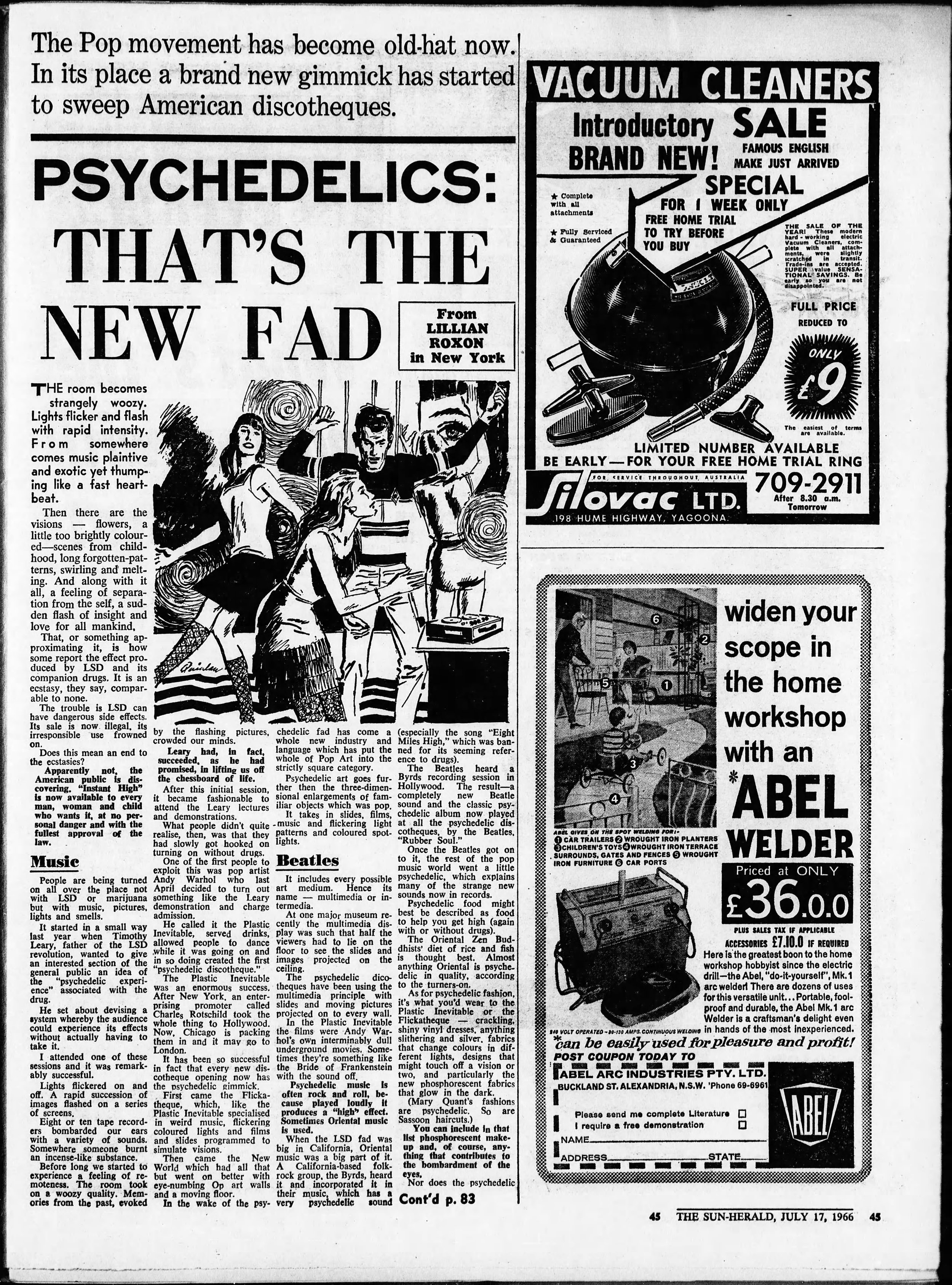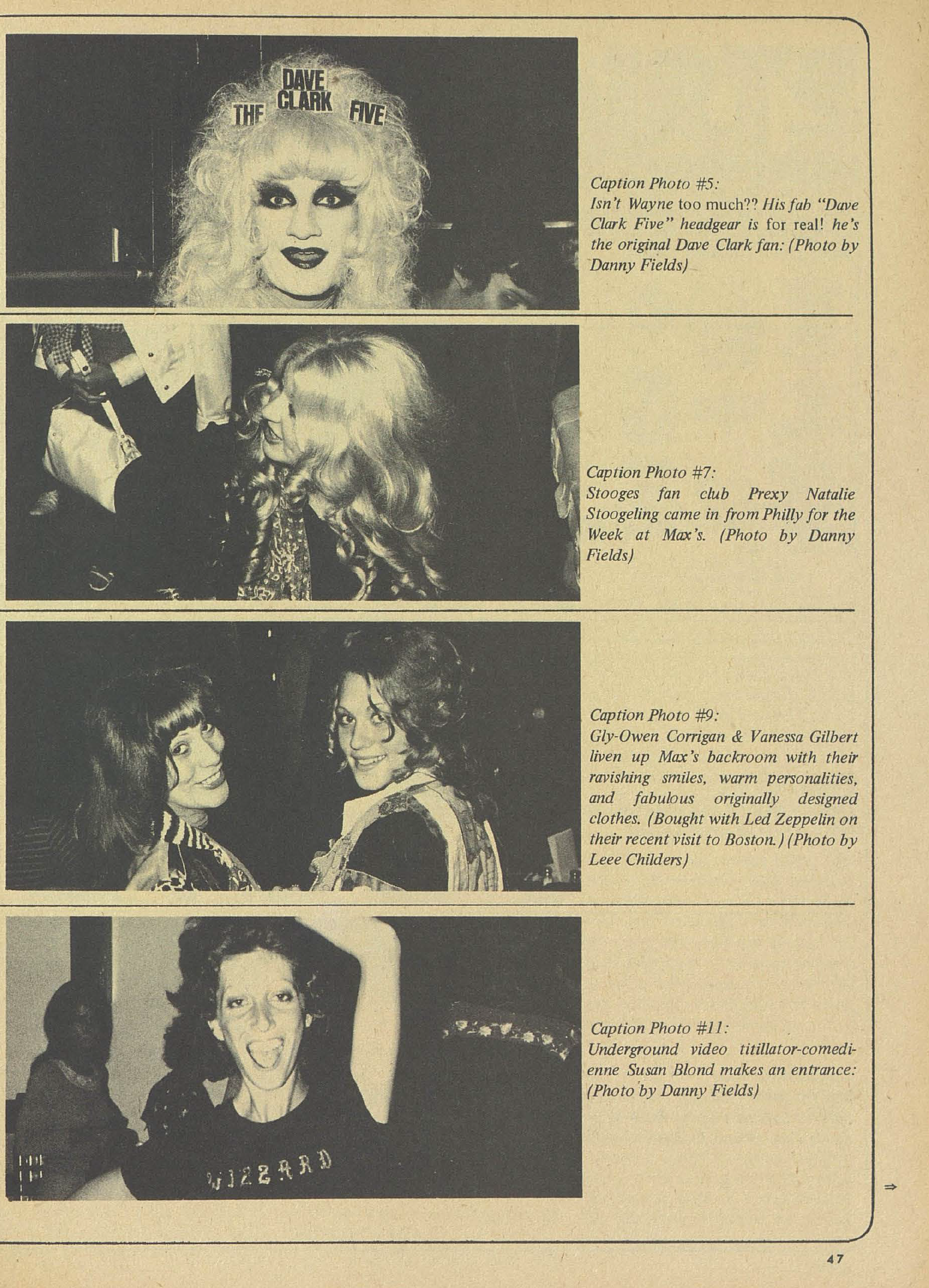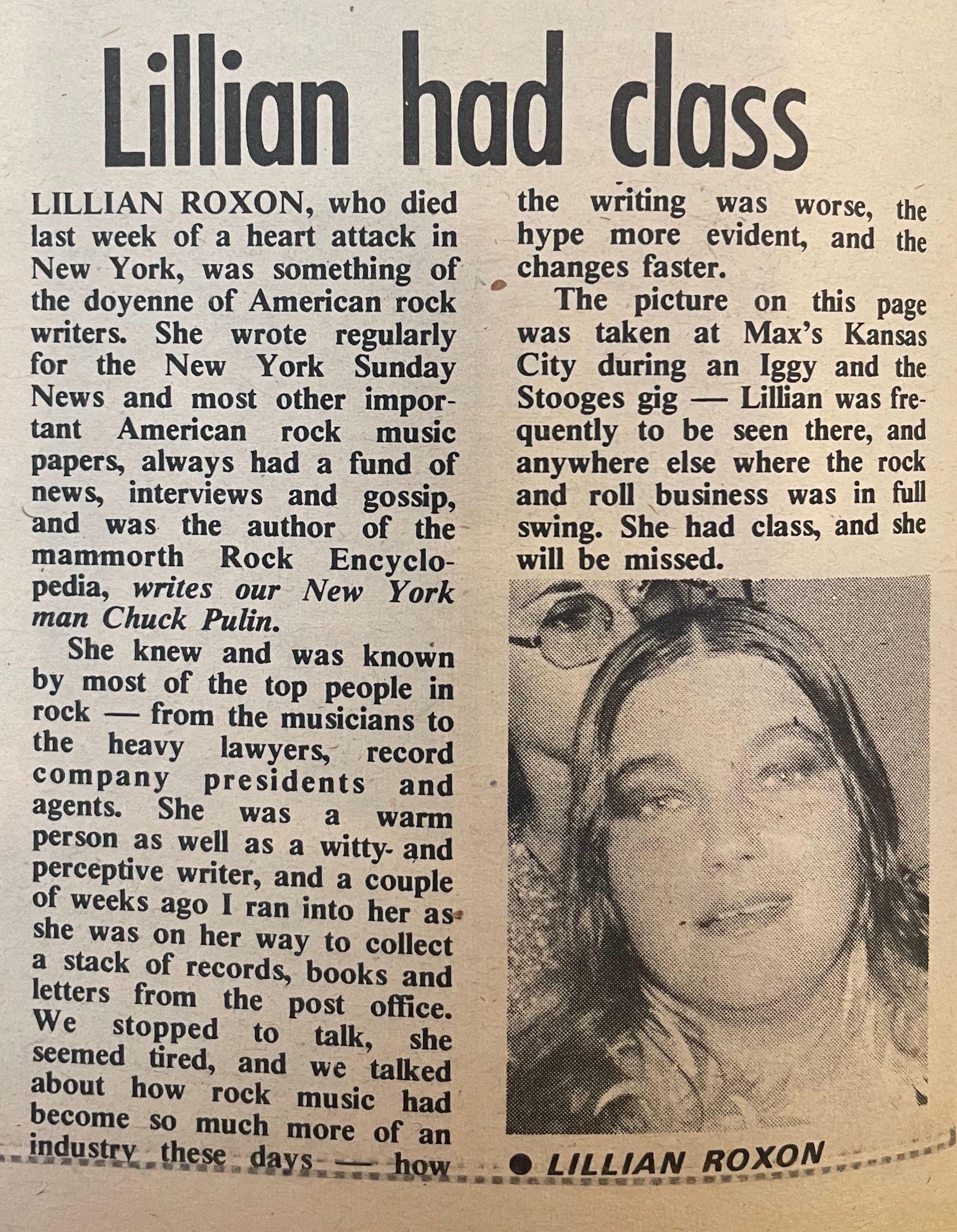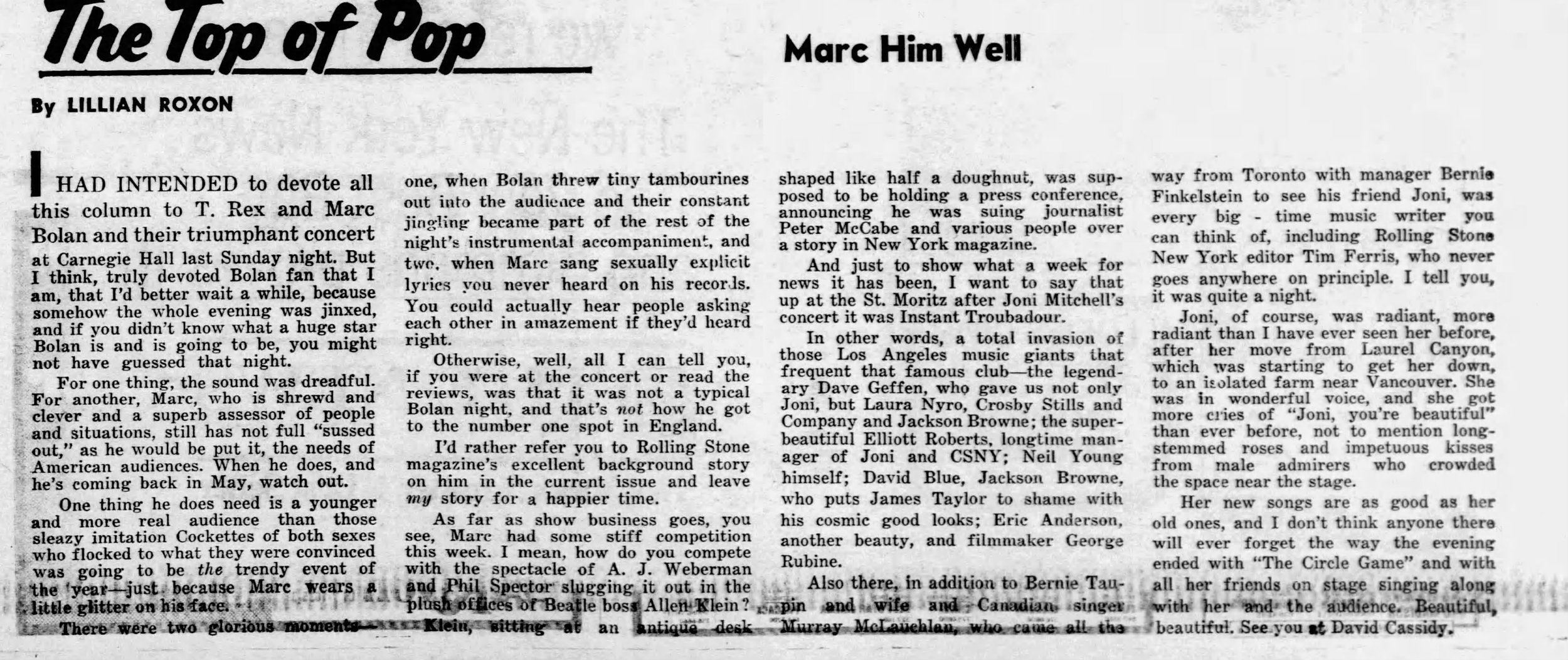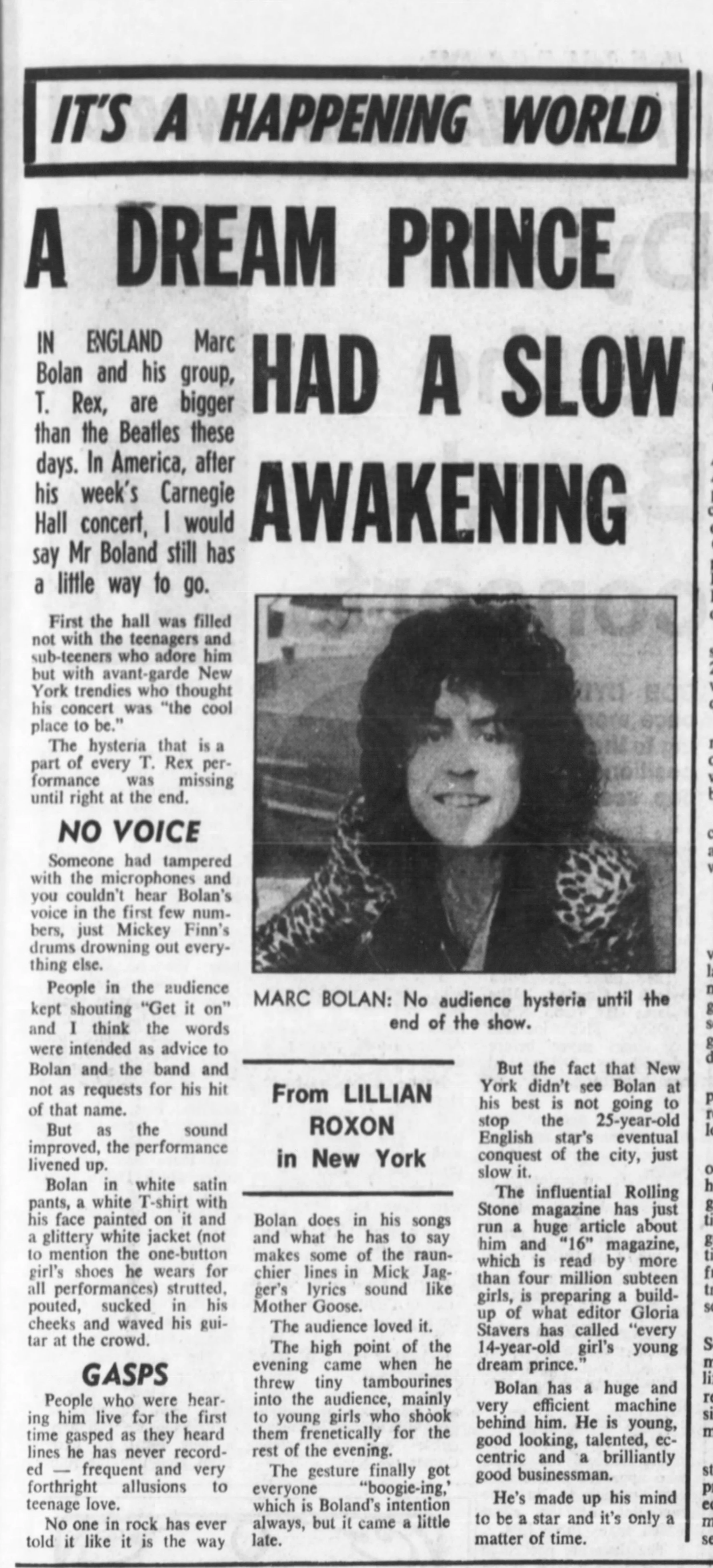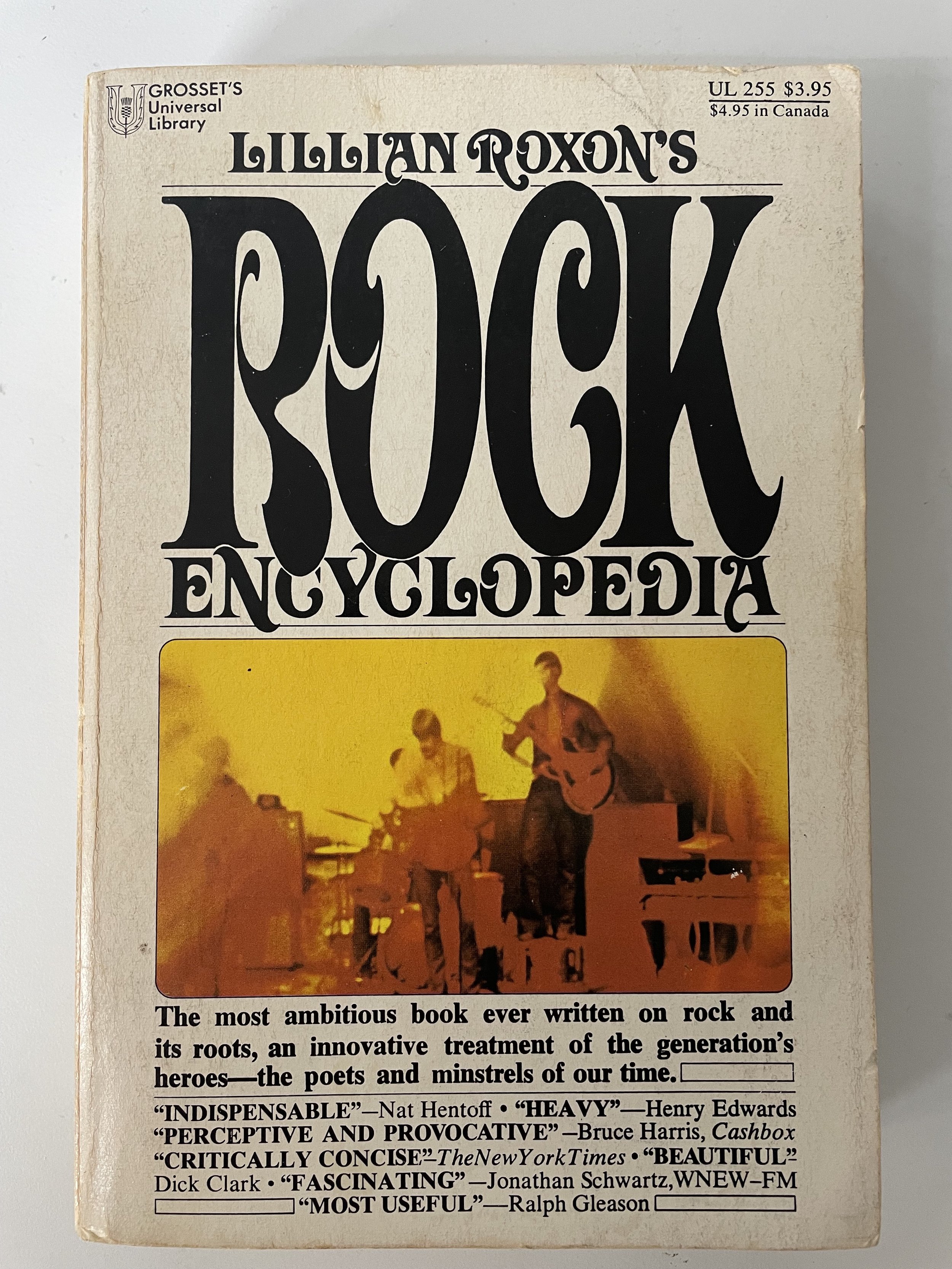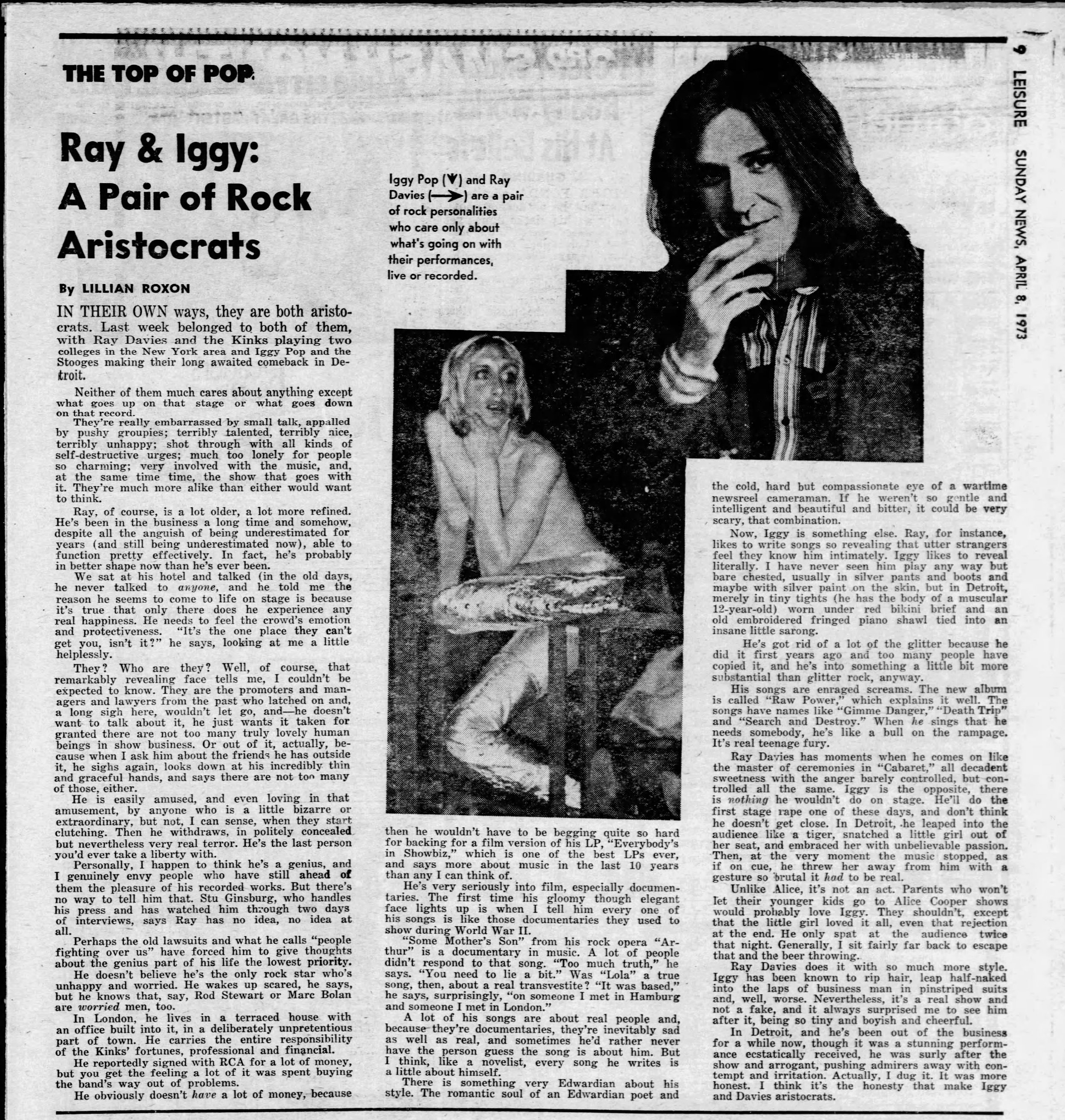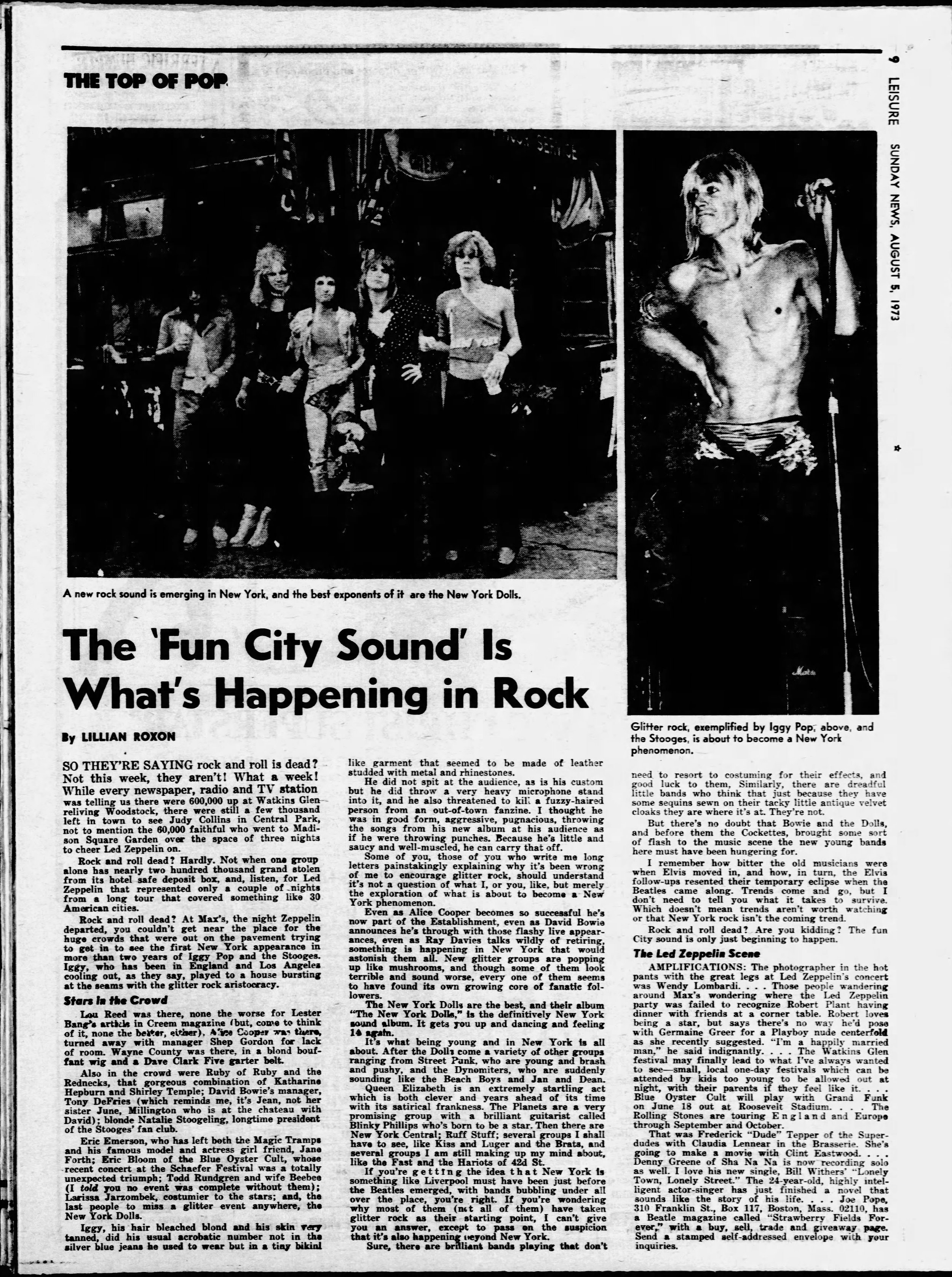‘If you asked me who was the world’s first pop journalist’, Jim Fouratt told Robert Milliken, ‘in the sense of translating sixties culture, art, fashion, music and politics in a popular way, Tom Wolfe got the credit but I think it was Lillian Roxon. The way she did it was to be in the scene yet objective about it, while Tom Wolfe was around the scene, and reported on it, but never part of the scene like Lillian was. Lillian genuinely loved rock and roll, not just the music but the lifestyle’.
Lillian Roxon: Mother of Rock (2002) is as fine a biography as any I’ve read. From her family’s flight from Nazis to exile and new beginnings in Australia to her death in New York, aged 40, in 1973. In between, Milliken tells the story of how Roxon became one of the significant players in the New York rock scene of the late 1960s and early 1970s, one of the movers and shakers who held court at Max’s Kansas City. Her student years and the Australian bohemian scene in first Brisbane then Sydney and her start in journalism are succinctly, but evocatively evoked, before her move to Manhattan, aged 27, as the 50’s tipped into the following decade.
Australian newspaper culture, the nascent Murdoch empire, tabloid journalism and Roxon’s place in this as an independent, career-minded young woman is portrayed with a deft touch that moves eloquently between historical context and her personal situation, both private and public. Roxon and her friends were great letter writers so Milliken has a treasure trove’s worth of material to draw on, which he adroitly pulls together with her published words and interviews with those who were closest to her as friends and colleagues.
Though it is the third act of her story that most interests me, her family’s history and her early life, especially in Sydney, are crisply and effectively etched to provide a sure sense of who she was and where she came from. I didn’t skip a page.
Her relationships with Linda McCartney and Germaine Greer are given generous space, never overbearingly so, but for me that is all peripheral to her friendship with Danny Fields, Lisa Robinson, Leee Black Childers, Lenny Kaye and the like and her mentorship of young writers like Richard Meltzer, who told Milliken:
Compared to so-called gossip writers, when Lillian wrote ‘scene pieces’ she had a playfulness that was so much more authentic, and never nasty or ill-tempered in the slightest. She wrote from a state of genuine affection for probably a wider range of rock-roll characters than any other rockwriter I have any recollection of. The only exception I can think of was Carole King. She hated Carole King (but then so did most of her colleagues).
In a June 1971 column for the Sunday News, Roxon wrote:
Carole King may have a number one single and a number one album, but I find her as boring as my girlfriends who are always on the phone to me whining about the problems they have ‘communicating’ and having ‘meaningful relationships’. She is like every messed-up neurotic girl you ever had to confront in group therapy. Sincere, certainly, well-meaning, too - a nice girl, not bad looking, super-talented, but exasperating and totally unexciting. You know, of course, what her success means - that rock is going to go into a ‘Dark Shadows’ period. Those moody broody songs about getting it all together and facing the world bravely are going to take over the air-waves, and then what are we going to dance to? The Pathetique Sonata? . . . You can learn more about being a human being from Tina Turner's body language than from all of Carole's fortune cookie philosophising.
That kiss-off line is so beautifully on point. If you can’t dance to Carole King you can pull back the rug and frug along with Ike and Tina, the Ronettes and the Shangri-las:
A contact sheet showing Andy Warhol attending an event at the Action House nightclub in Island Park, Long Island, New York, 4th December 1966. Among those attending are Nico (top, left), her son, Christian Aaron Boulogne (top, centre). The Velvet Underground were on the bill for the evening, along with The Fugs, The Ronettes (second row, far right) and The Shangri-Las.
RONETTES/There are two kinds of lady singers - the angels and the devils. The angels sing ethereal songs in ethereal voices and wear long, loose gowns. The devils sing earthy songs in earthy voices and their gowns fit where gowns should fit. The Ronettes were every teenage boy's dream of a teenage devil in triplicate. Brazen, shapely and without any illusions about men and sex. They were like girlie magazines come alive and set to music. Their song Do I Love You made the boys feel like men. Nothing psychedelic there, just straight from the hip or wherever.
THE SHANGRI-LAS/From time immemorial the bitch goddess has haunted and fascinated man. And so, of course, has the girl next door. The Shangri-las were both, a real bargain for the boy who wanted everything in a girl and the girl who wanted to be that everything. They played it soft and tough at the same time. Their toughest song was Leader Of The Pack. (He was the head of the motorcycle gang and she was his tough mama. Then he dies. Tough mama goes soft, but not for long. You know whoever gets to be the next leader gets her too. Teased hair, doe eyes, ankle bracelet and all.) It was the necrophilia of it all that shocked the adults, not the funkiness of three bitchy white girls who told it straight out that in motor-bike gangs you don't just hold hands. The Shangri-las were akin to Clyde Barrow's Bonnie, in a reversal of the proverbial image, the velvet hands in the iron gloves.
The Ronettes and Shangri-las quotes are from Lillian Roxon’s Encylopedia of Rock. Here she wrote of the Rolling Stones who, unlike The Beatles, ‘had never seen soap and water. And where the adorable little wind-up Beatle moptops wanted no more than to hold a hand, the hateful rasping Stones were bent on rape, pillage and plunder. Well, at least satisfaction . . . No one had ever seen a white man move on stage the way Jagger moved . . .
Right from the start he parodied himself completely but that worked for him, not against him. His lips and no-hips drove every relevant point home; a not-so-distant relative of the Shangri-las’ Leader of the Pack, he laid it on the line. Most of the girls who watched had never before had the word put on them quite so explicitly. It was heady stuff for fourteen-year-old virgins, and others besides.
Milliken spends little time analysing Roxon’s work, he’s content to let her friends and colleagues act as her interpreters. That’s fine, even if it means you have to go back to the work to figure out just why she was held in such high regard. Unfortunately, not much of her writing is readily available, certainly not in any curated form, and the Encyclopedia is long out of print. If too little of her work is included in the biography (there are some selected writings at its end but these are mostly from the Encyclopedia alongside a few key pieces on the women’s movement, Germaine Greer and Creedence Clearwater Revival). What’s also missing is a more detailed account of how she spent her time and what she wrote about in the last five years of her life, her trips to London, her radio show appearances and her support of third generation rock artists like Iggy and the Stooges, David Bowie, Marc Bolan and the New York Dolls all demand a fuller account.
Even at this late date, I’m going to take a position on defining Lillian Roxon as the ‘Mother of Rock’. It’s a misnomer, the maternal diminishes and marginalises her activity to one of a nurturing figure rather than a full participant with an original and unique voice that is worth listening to in its own right. That said, Milliken has written a studiously researched and eloquent biography. It’s an admirable achievement. Someone, however, needs to supplement Milliken’s book with a reader that genuinely covers the range of her outputs.
Last words go to Lillian Roxon, on moving into new accommodation she had it fumigated to exterminate the pests that Germaine Greer had, to her chagrin, suggested defined her:
I now live alone with no colonies of roaches and one life size poster of Iggy Stooge mother naked to cheer me up.
Richard Bernstein Iggy Pop (1970) edition of 100 silkscreen on paper. 42” x 32” Is that ‘life size’? Yours for $5K from Sotherbys [HERE}

